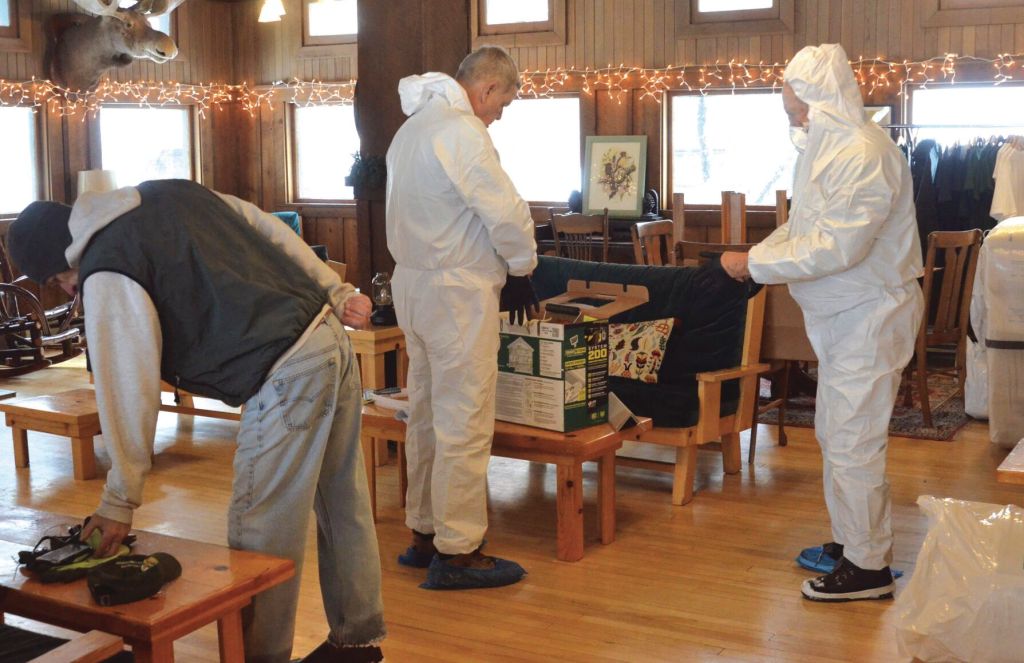Bats being evicted from Wallowa Lake Lodge
Published 3:00 pm Wednesday, March 15, 2023

- Board members of Wallowa Lake Lodge in hazmat suits prepare to seal up cracks in the lodge’s attic Friday, March 10, 2023. The goal is to make the attic inhospitable to the bats that have called it home for decades.
JOSEPH — There’s no belfry to house the bats at Wallowa Lake Lodge, but the attic where they’ve lived for decades could well be called a “battic” — at least until recently.
Trending
Earlier this month, board members and employees of the lodge began work making the attic inhospitable to the bats, which are currently in a nearby cave hibernating.
“The bats have lodged up there for decades,” said Madeline Lau, manager of the lodge. “They’ve created a small guano mine, which we’re remediating right now and sealing that off as well as putting lights up so they will go off to the bat houses that we purchased.”
The remediation work to replace toxic fiberglass insulation is being done with the assistance of the Energy Trust of Oregon, which helped pay for the new insulation. Lau did not say what the cost of the insulation was, but board member Dan Leonard said the workers were replacing 4,000 board feet of it.
Trending
The lodge purchased and installed three bat houses on ponderosa pine trees near the lodge. Bat guano — feces — has been placed in the houses to attract the bats and make it feel like home. Each of the bat houses has a half dozen or so louvres and can hold about 250 bats, said Bob Lion, the lodge maintenance supervisor who mounted the houses.
Bill Courtney, the board member who was coordinating the effort, said they don’t want to exterminate the bats, just send them to a new home.
“We’re trying to make (the attic) inhospitable so they’ll find a new home,” he said.
He said the bats — colloquially known as little brown bats and scientifically as Myotis lucifugus — should be attracted to the guano-scented houses.
Courtney said it just takes the guano scent to attract the bats — and their newly hatched young.
“That’s what we’ve been told,” he said.
Lau said the job needs to be done soon because the lodge’s board plans to install a new roof on the century-old building in another year or so, though she’s not precisely sure when that will happen.
She said the initial estimate to replace the roof is more than $100,000, which the board has yet to agree to.
According to a Oregon Department of Fish and Wildlife website, of the 15 species of bats in Oregon, the little brown bat is one of the most common. The little brown bat has been designated as an Oregon Conservation Strategy Species; the designation is given to species that have small or declining populations, are at-risk or of management concern.
The flying mammals can reach speeds of 20-30 mph. Some of Oregon’s species migrate south in winter while some remain here and hibernate. Bats have ecolocation, which allows them to make high-pitched sounds and then listen to the echo of those sounds to locate where objects are. Echolocation helps them find even the smallest insect.
Bats are considered valuable pollinators and insect predators.
The effort to give the bats a new home still has a way to go. Lau estimated that although five board members and two other workers put in long days Friday and Saturday, the work will still require another couple of weeks.
“It’s a way bigger job than they realized,” she said.









